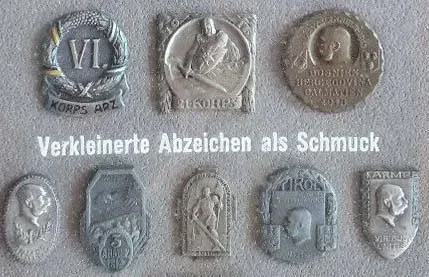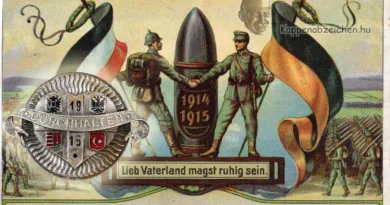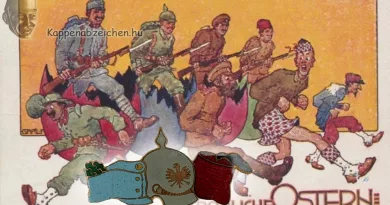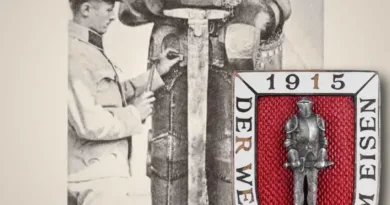Gurschner
The Kappenabzeichen of the Great War were made by at least two dozen manufacturers. The largest of these were the Austrian companies Brüder Schneider, Gurschner and the Budapest company Arkanzas. Larger companies designed and made hundreds of designs, but smaller ones could reach hundred too.
This post will be about an interesting thing about the Gurschner badges. The badges of this company were made with two types of fastening (at least a lot of their products). In addition to the traditional hook-and-pin, there were also variants with two relatively short and fairly rigid clams on the back, which, moreover, did not overlap. With these staples, it was not possible to permanently attach the badges to the soft fabric material of the field cap. Therefore, the question arose, if not for a cap, for what other purpose were they intended?

The board presented here provides an answer to the question: these were exhibited pieces. Shop keepers could put up the billboards in the shop window to show the types of badges sold. So far, I have found 4 boards with not exactly the same composition and layout on the net, so sometimes the boards have changed along with the offer. Of course, it was possible to insert the clamps into the cardboard material of the board.

At the bottom of the collection presented here are the miniature badge variants. They are described as jewelry by the manufacturer himself. So these were meant to decorate other objects. At the same time, the attachment variants of the mini were also similar to the regular-sized badges. There were both pin and clamp versions. And if the badge was soldered to a cigarette case, the needle or clamp had to be cut off by all means. So only the badge body itself could be used for decoration, without a needle. But you can also see wearing pictures with the mini versions, so they were worn on field cap as well.




